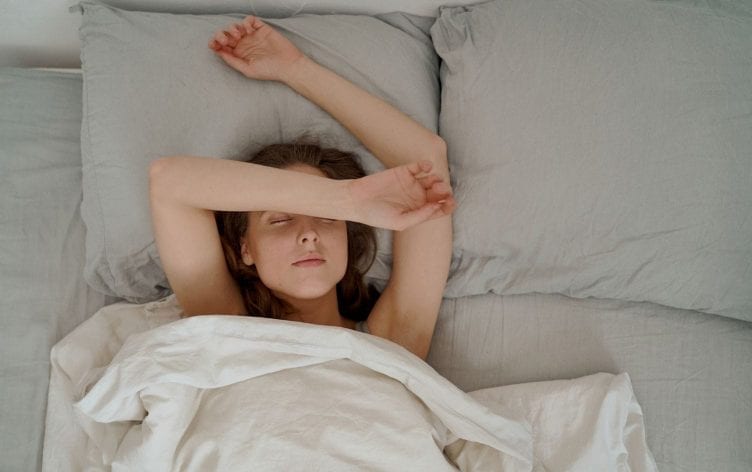
Obstructive sleep apnea (OSA) is a common — and potentially serious — disorder that can seriously mess with your sleep. If you have OSA, your breathing pauses while you sleep, thanks to narrowed or blocked airways.
The standard treatment options for OSA is masks or appliances (known as continuous positive airway pressure, or CPAP devices) designed to keep your airway open during the night, “but neither of those are appealing to people with sleep apnea,” says Christopher E. Kline, PhD, an assistant professor in the department of health and human development at the University of Pittsburgh who studies sleep apnea.
Research suggests exercise may be an effective treatment option. For example, a July 2020 study in the Journal of Clinical Sleep Medicine shows greater levels of physical activity (like walking) are associated with a lower risk of OSA.
Unlike CPAP devices, which have to be worn nightly to see any effects, you don’t necessarily have to exercise every day to see OSA benefits, Kline says.
HOW EXERCISE CAN HELP SLEEP APNEA
It’s still unclear exactly how or why exercise reduces OSA, Kline says. However, there are theories as to how it works.
1
DECREASES FLUID BUILDUP
One theory is exercise reduces the nocturnal rostral fluid shift. This is a natural phenomenon that happens when the fluid that accumulates in your legs during the day moves to the neck and upper chest when you lie down to sleep.
In people with kidney and heart problems, and others with high fluid retention, greater quantities of fluid build up in the legs. When high amounts of fluid shift to the upper chest and neck during the night, it can make the upper airway smaller and more collapsible, increasing risk of sleep apnea, Kline says.
Exercise may reduce the amount of fluid that builds up in your legs during the day. “By being physically active, we’re contracting muscles in our legs, and that actually squeezes out any excess fluid,” Kline explains. With less fluid building up in your legs, there is less fluid shifting to your upper airway at night, which reduces sleep apnea symptoms.
In fact, a 2016 study found four weeks of aerobic exercise training helped decrease the severity of sleep apnea via nocturnal rostral fluid shift.
2
EXERCISE MAY FOSTER WEIGHT LOSS
Many clinicians recommend weight loss to treat sleep apnea, Kline says.
While you may not see a significant reduction in body weight through exercise, you’ll likely see changes in body composition: a decrease in body fat and an increase in muscle mass, according to Kline.
It’s these reductions in body fat — particularly abdominal fat — that could prove beneficial for people with sleep apnea.
Greater levels of fat in the abdominal area create shallow breathing patterns, which triggers sleep apnea. Reducing fat potentially lifts the excess weight off your upper trunk and airway, making your airway a bit larger and less likely to collapse, ultimately leading to deeper, more stable breathing, Kline explains.
THE BOTTOM LINE: EXERCISE MAY HELP, NOT CURE, SLEEP APNEA
Exercise won’t make sleep apnea go away, but it can help, Kline says.
Research suggests exercise can improve common side effects of OSA, such as interrupted sleep and daytime sleepiness.
According to Kline’s research, adhering to physical guidelines (150 minutes of moderate-intensity cardio and two resistance workouts per week) reduces the severity of sleep apnea by roughly 25%. That may not seem like much, but even modest improvements in sleep apnea can significantly reduce the risk of adverse health effects, like high blood pressure, according to a 2013 study.
Check out “Workout Routines” in the MyFitnessPal app to discover and log workouts or build your own with exercises that fit your goals.
Tagsfitnesssleepwellness